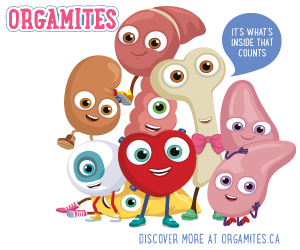Gender dysphoria is a feeling of distress or unease that may occur with people whose gender identity differs from the sex (male, female) they were assigned at birth. While some transgender and gender non-conforming (TGNC) individuals experience no discomfort or distress as they transition, others feel conflicted or troubled. The diagnosis of gender dysphoria was created so that people experiencing this situation can access resources that will help them transition to the gender identity that feels natural. Mental health professionals are clear on one point: gender dysphoria deals with the psychological distress and discomfort sometimes brought on by exploring gender identity related issues not the issue of gender identity itself. In fact, the treatment of gender dysphoria does not involve any effort to change a person’s gender identity or to push them away from their questioning.
Helping students
If a student trusts a guidance counsellor enough to reveal that they are questioning their gender identity, it is incumbent upon the guidance counsellor to listen intently and respond with compassion. If the student is troubled by the questioning, counsellors may attempt to set the student’s mind at ease. Questioning and persistent thoughts are a natural part of adolescence. Reassurance is all a guidance professional has to offer prior to a referral to a mental health professional if the questioning is potentially representative of gender dysphoria.
If a diagnosis of gender dysphoria is delivered by a mental health professional, the guidance counsellor can help develop a school plan to aid the student as they delve deeper into their questioning and begin their transition, provided that is the course of action the student has chosen. A plan might include:
- Ongoing communication with the student’s parents regarding their school life to make sure the school plan aligns with the family’s plan.
- Notifying teachers of the student’s situation (with the student’s permission).
- Update the school database to reflect the student’s gender identity, including name and pronouns (she/her, he/him, they/them).
- Make every effort to use the proper name and pronouns when addressing the student.
The overall goal is to help the student feel at ease with their questioning and help to alleviate their distress.
Treatment
If a student is prepared to transition from the gender they were assigned at birth, they can seek medical and behavioural treatment that may help ease their gender dysphoria. Treatment includes:
- A mental health assessment to ensure the transition can progress unimpeded. For example, if a transitioning person is experiencing gender dysphoria, anxiety, depression, or trauma, it is important to thoroughly examine these issues prior to beginning more aggressive behavioural and physical therapies.
- The person may begin to explore their gender identity by adopting a name, pronouns and manner of dress that is in line with the gender that feels natural to them.
- Once a person is committed to transition, the decision may be made to pursue hormone therapy (with the permission of the parent for youth under the age of consent) that will shift the body toward the gender identity of the individual
- Eventually, a person may choose to have surgery to alter their appearance and/or genitalia to demonstrate their commitment to their gender identity. This usually happens after the person has reached the age of consent.
None of these steps are taken quickly. Transitioning is a process. A person experiencing gender dysphoria wants to explore the path to transition as part of this process. One key point should be highlighted: people experiencing gender dysphoria often see their symptoms ease as they begin the questioning process and when they begin to transition.
Next steps
Guidance counsellors have been seeing TGNC youth with more frequency over the past few years. This speaks to both the rising acceptance of transitioning (though there is a long way to go in this area) as well as the welcoming nature of most guidance counsellors. Those experiencing gender dysphoria, as well as other members of the TGNC community, can often be the victims of stigmatization and discrimination. Feeling rejected or bullied explains, in part, why the suicide rate among TGNC individuals is markedly higher than the general population. This highlights the fact that TGNC youth, and those with gender dysphoria, need the support of guidance counsellors and the greater school community. With warmth, acceptance and compassion, guidance counsellors can provide this support.
By: Sean Dolan





